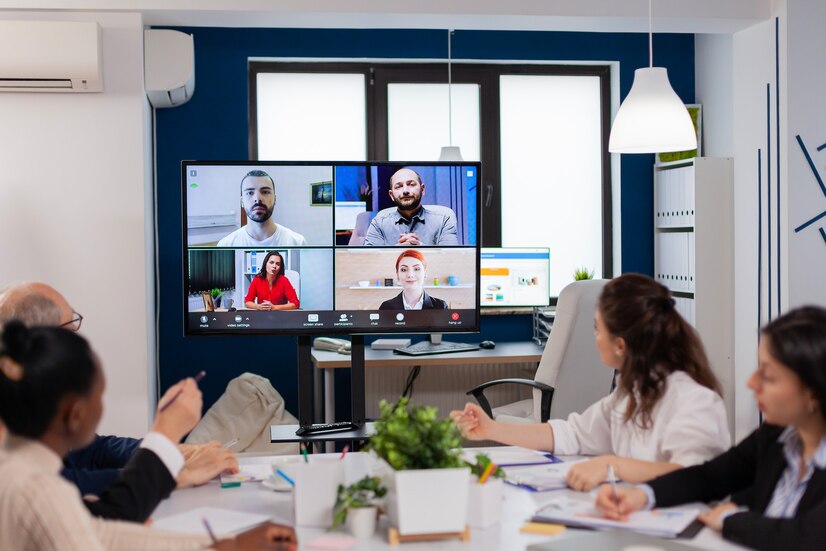Successful Communication in Virtual Meetings
- 1 Choose the Right Platform
- 1.1 Set Clear Agendas and Ground Rules
- 1.2 Prepare for Technical Hiccups
- 1.3 Practice Active Listening and Engagement
- 1.4 Optimize Meeting Length and Frequency
- 1.5 Leverage Visual Aids and Collaboration Tools
- 1.6 Provide Opportunities for Breaks and Socialization
- 1.7 Implement Accessibility Features
- 1.8 Encourage Feedback and Continuous Improvement
- 1.9 Prioritize Security and Privacy
- 2 Conclusion
Virtual meetings have become an integral part of our professional lives, and mastering the art of remote communication has never been more critical. In this blog post, we will explore the best practices and essential tools needed to ensure effective communication during remote business meetings. With these tips, you can elevate your virtual meeting game and stay connected even when miles apart.
Choose the Right Platform

Selecting the right platform for your virtual meetings will lay the foundation for effective communication. While there are several tools available, it’s essential to consider factors such as ease of use, video and audio quality, and additional features like screen sharing and whiteboarding. Consider selecting a platform that offers a reliable and user-friendly experience for all participants.
Set Clear Agendas and Ground Rules
To ensure a focused and productive virtual meeting, it’s crucial to set clear agendas and ground rules beforehand. Communicate the purpose, objectives, and expected outcomes of the meeting, so everyone is aligned from the start. Establishing ground rules can include assigning meeting facilitators, defining how questions should be addressed, and setting time limits for discussion topics.
One useful way to set the stage for a successful virtual meeting is by sending out corporate event invitations highlighting the agenda, date, and time. By using well-designed and personalized invitations, you can create a professional tone for the meeting and ensure participants are well-informed and prepared.
Prepare for Technical Hiccups

Technical issues are an unfortunate reality of virtual meetings, but being prepared can help minimize disruptions caused by them. Testing your audio and video before the meeting, using stable internet connections, and having a backup plan in case of technical difficulties can improve your meeting experience. Encourage attendees to do the same to ensure a smooth remote meeting experience for everyone.
Practice Active Listening and Engagement
Active listening and engagement are vital for effective communication in a virtual setting. Encourage participants to show their presence by using non-verbal cues like nodding or maintaining eye contact. Promptly address questions and comments in the chat and acknowledge input from team members. Creating an inclusive virtual environment fosters collaboration and makes meetings much more informative and enjoyable.
Optimize Meeting Length and Frequency
Long remote meetings can lead to fatigue, disengagement, and decreased productivity. Focus on keeping your meetings short (30-60 minutes) and only as frequent as necessary. Evaluate whether each agenda item requires a full meeting or if it could be communicated via email or instant messaging instead. Being mindful of your team’s time and energy fosters a healthy remote work environment.
Leverage Visual Aids and Collaboration Tools
Enhance your virtual meetings with visual aids and collaboration tools to boost engagement and understanding among attendees. Sharing slides, using digital whiteboards, and employing real-time collaboration tools can help present information clearly, drive discussions, and hold participants’ attention. Experiment with different tools to find what boosts your meetings’ productivity and communication the most.
Provide Opportunities for Breaks and Socialization

Incorporating breaks and moments for socialization in your virtual meetings can lead to strengthened relationships and better teamwork. Small talk, icebreakers, and short breaks can help participants feel more connected and energized, leading to a more productive meeting overall. Virtual coffee breaks or happy hours can also contribute to team building and a sense of camaraderie.
Implement Accessibility Features
In order to create an inclusive virtual meeting environment, implement accessibility features for those with specific needs. This can include providing live captioning for individuals who are hard of hearing, or ensuring that screen-sharing is compatible with screen reader software for visually impaired participants. By removing barriers to participation, you foster a more inclusive remote work culture.
Encourage Feedback and Continuous Improvement
To consistently maintain high-quality virtual meetings, it’s essential to encourage feedback from participants. Solicit input on what aspects of the meetings were effective and what could be improved upon. This feedback can inform adjustments and enhancements to your virtual meeting processes, ensuring that your team’s communication stays effective and meets everyone’s needs.
Prioritize Security and Privacy
In the digital age, ensuring the security and privacy of your virtual meetings is crucial. Look for platforms with end-to-end encryption and robust security controls to protect sensitive information. Encourage participants to follow best practices, such as keeping software updated and using secure passwords. Taking steps to safeguard your virtual meetings can prevent unauthorized access and potential data breaches.
Conclusion
By following these best practices and utilizing essential virtual meeting tools, you can unlock effective communication and collaboration even in a remote setting. Remember to stay adaptable and experiment with new approaches, as the virtual meeting landscape is continuously evolving. Keep mastering the art of virtual meetings, and you’ll soon see the positive impact on your professional relationships and business outcomes.

















